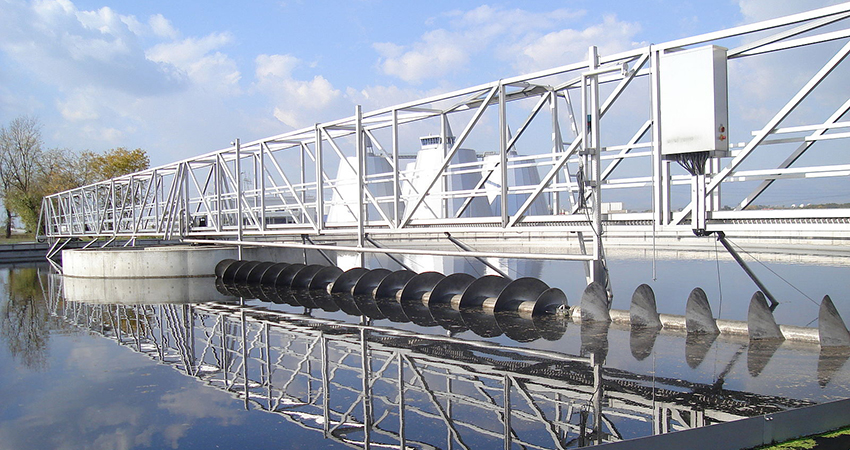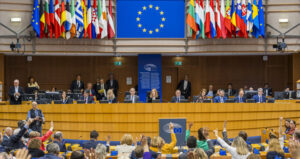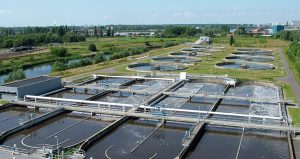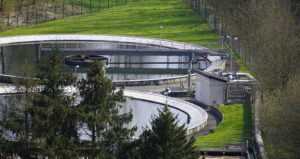Stricter rules for wastewater treatment in Europe

-
 Esther Rasenberg
Esther Rasenberg
Share article:
Brussels is reviewing the Urban Wastewater Treatment Directive (UWWTD) and that will lead to stricter rules for wastewater treatment in Europe. In 2019 the European Commission evaluated the implementation of this directive and identified its shortcomings. A year later stakeholders were consulted and until the 21st of July citizens can contribute to the new rules. Although the revision process is not yet completed, it is already obvious stricter rules for wastewater treatment can be expected.
According to the current rules there is no need for secondary treatment for wastewater in communities with a population smaller than 2.000. But small agglomerations and non-connected dwellings place significant pressures on 11% of the EU’s water surface bodies, concluded the European Commission in the evaluation in 2019. Introducing extra treatment rules for small communities seems a logical step.
Implementation
According to the evaluation of the European Commission some EU countries are lagging behind with UWWTD-implementation and need to step up their efforts. The website www.uwwtd.eu provides detailed information about the state of urban waste water treatment in all Member States and the pressure untreated wastewater is putting on the local environment. The implementation of wastewater treatment in the European Union is supported through substantial EU funding. And where needed the implementation is driven through infringement. Some Member States, like Greece and Spain, were fined over the last years for not complying to the rules.
Separate sewers are needed
Due to climate change the European Commission expects more storm water overflows in the future. These incidents will place significant pressure on surface water bodies and form an increasingly important source of pollution. Separating the collection of wastewater from the collection of rain water can be an effective solution to prevent overflows. So different sewers for grey and black water need to be realised.
Emerging substances
According to the evaluation the existing UWWTD is too old to deal adequately with new concerns, such as pharmaceutical residues and microplastics. The strategic approach to pharmaceuticals in the environment and the plastics strategy are meant to deal with these issues. According to the OECD end-of-pipe upgrades of Waste Water Treatment Plants (WWTPs) are not the best solution for medical residues. These solutions are costly, energy intensive and toxic transformation products may be formed, claimed OECD-researchers in the OECD water report ‘Pharmaceutical Residues in Freshwater: Hazards and Policy Responses’. But in combination with other approaches, quaternary treatment at the level of WWTPs may play a role in protecting the environment.
Saving energy and more transparency
The EC-analysis also showed that the waste water sector could do more to help meet EU-wide climate and energy targets. And according to the evaluation of the European Commission the Directive’s requirements on reporting and public information are rather old-fashioned. Digital technology can offer better and more efficient means of communication.
Reviews of stakeholders
Stakeholders were able to contribute to the evaluation until September 2020. They shared their views during four expert workshops, a stakeholder conference and a 14-week public consultation. During this consultation 57 organisations contributed. These reactions are still available and they give an impression of the different opinions.
Polluter pays-principle
WAREG, the Association of European Water and Wastewater Regulators in Europe, emphasized the importance of the effective application of the polluter pays-principle. According to them also cost recovery and transparency of information have to be guaranteed by setting transparent tariffs for wastewater services.
Public-private partnerships
Chemical Company Dupont, also known from the PFAS-pollution, pleas for public-private partnerships. “With increasing demands placed on limited freshwater resources, we must move beyond a linear economy model where we take, make and dispose of raw materials, to a circular approach in which raw materials are reduced, reused and reclaimed.”
Nature-based solutions
The European Environmental Bureau (EEB) states the UWWTD now does not include green infrastructure and nature-based solutions to tackle remaining and emerging pollution. The nature-based solutions can range from small-scale solutions such as porous pavements, vegetated roofs to larger-scale solutions such as the constructed wetlands. According to the EEB this kind of solutions need to be at the center of the UWWTD revision.
Surveillance of pathogens
Water solutions company Xylem proposes that a revised directive should include policy measures that ensure the modernisation of Europe’s wastewater infrastructure. “We would like to stress that this can be achieved by integrating digital solutions into WWTP’s. They plea for monitoring obligations that would enable the surveillance of pathogens in wastewater.
Introduction of tertiary sewage treatment
The independent organisation for nature conservation WWF urges the European Commission to require Member States to introduce tertiary sewage treatment to protect especially vulnerable bathing, shellfish and nature areas.


















